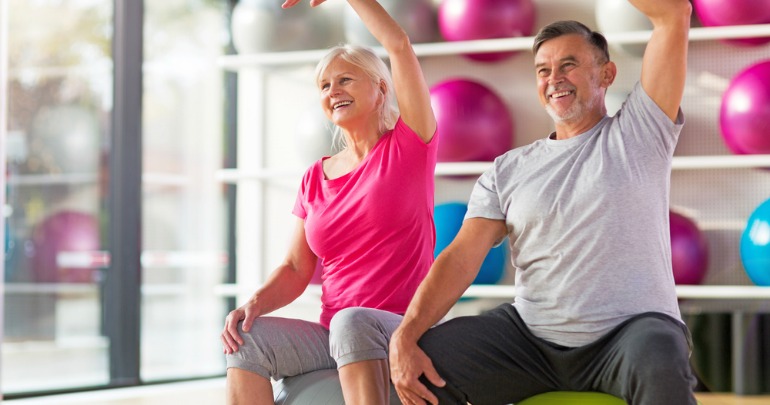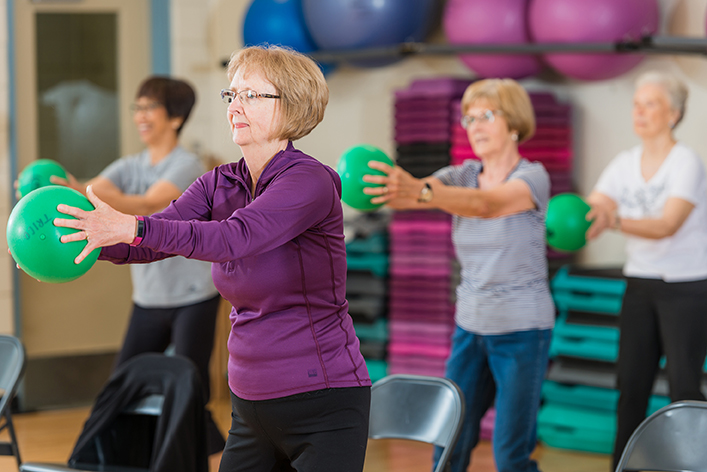Any kind of physical activity has a profound effect on our body. Exercising impacts our musculoskeletal system, cardiovascular system, and nervous system. New studies keep emerging almost every day showing the benefits of exercising, ranging from reducing the risk of cardiovascular diseases to improving immunity. But as you age, your body goes through various transformations and systemic changes. Choosing the right type of exercise is vital to get maximum benefits. To ensure you are doing the right kind of exercises for your age, follow these guidelines:
Children & Adolescents

Children and adolescents aged 6 to 17 years should practice 60 minutes or more of moderate-to-vigorous physical activity daily. The aim at this age is to develop stronger bones, good fitness levels, agility, concentration, and of course, discipline, therefore playing sports will be the best kind of physical activity they can engage in.
Adolescents who take part in physical activities are said to perform better in academics than inactive students of the same age group. It also improves memory and cognition. Yoga can be helpful in dealing with menstrual issues in young girls like irregular periods, dysmenorrhea, etc. Breathing exercises in yoga can be very good for improving lung function, increasing concentration, and long-term management of stress.
In Your 20s & 30s

This will be the period when you finish studying and start working. It is a time when you will be at the best of your physique, health, and life. Your 20s and 30s are when you develop and maintain a fit lifestyle to ensure a healthy mid-life and old age. Keep varying your physical training from time to time by experimenting with intensity, time, and type of exercise.
As you get to your 30s, the importance of work-life balance intensifies. Women planning to get pregnant need to take care of their physical and mental health even more. Post-pregnancy exercises such as pelvic floor exercises help to recover the body after delivery. If you have a sedentary lifestyle or a desk job, you need to do some postural exercises to prevent musculoskeletal ailments.
In Your 40s & 50s

A lot of people start gaining weight at this age as metabolism slows down. A woman’s body undergoes transformation and she also attains menopause in the late 40s or early 50s. Hormone levels decrease both in men and women, leading to weight gain, especially around the abdominal region, therefore it becomes inevitable to maintain a healthy weight. This can reduce the risk of developing arthritis, coronary heart disease, and other common and related conditions, including back pain, Type 2 Diabetes, stroke.
Keep up with your cardio workout three to five times a week. You can switch to low impact activities like swimming if you have joint pain. Weight-bearing and strengthening exercises are very important for maintaining good muscle mass and stronger bones. In your 50s, you may start getting more aches and pains, however, don’t let this stop you from exercising. Make some changes in your exercise, include low-impact activities such as walking, biking, or swimming. Try reducing the intensity and exercise more often
In Your 60s

People tend to slow down and become more sedentary with age. By now, many develop chronic diseases, other health problems, weight, or pain issues. You might think that exercising simply isn’t for you. But as you grow older, an active lifestyle becomes vital more than ever.
This is the time when you can start focusing on preventing falls and start working on balance. The National Institutes of Health recommends daily exercises to help you improve and maintain your balance. Do exercises like standing on one foot, leg raised, and walking heel to toe. Also, continue with cardio exercises and low impact activities to the main cardiac as well as bone health.
In Your 70s & Beyond

The main focus here is to maintain your functional independence, for that you will have to maintain strength and flexibility. Continue with your aerobic and flexibility exercises with a special focus on balance. Older people can also be vulnerable to mental health conditions because of reduced cognitive function, social isolation, loneliness, decreased mobility, reduced strength, reduced independence, and frailty. Group exercises can be extremely beneficial for both physical and mental health.

